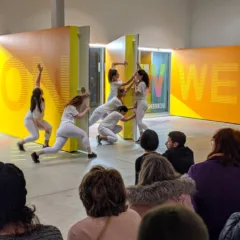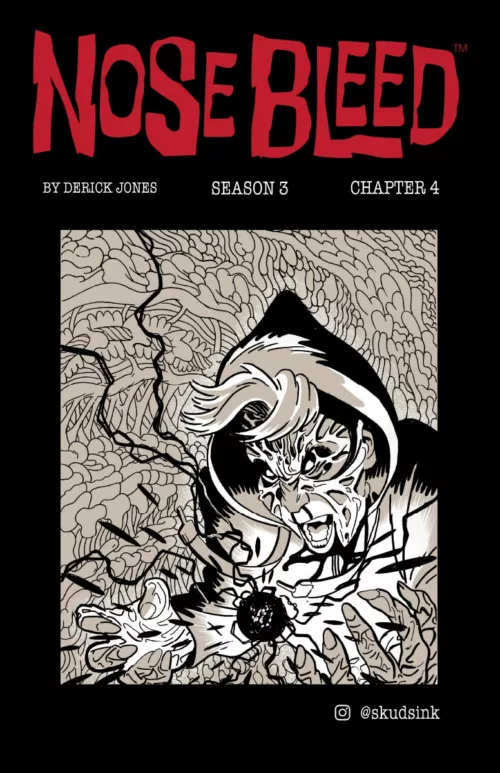In one of our chats yesterday about Manya’s piece in the Weekly on selling art, I said, We as a society spend $100 or $150 for seats at a rock concert, but why not for an ephemeral piece of art that might last a day, a year, five years, giving us pleasure? I wouldn’t have had this thought perhaps if Roberta and I weren’t talking together. The following thoughts ensued from the original conversation:
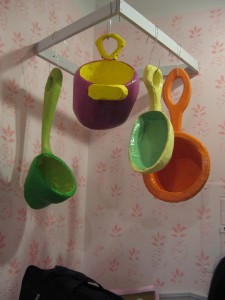
In a way, I think the centers of art commerce have undercut what is the most exciting form of art-making today, by supporting some notion that true great art is something worth millions or something with the potential of accruing that kind of value. But there’s true great art out there that’s not fetching any money at all, just because it is ephemeral or new or unfamiliar or not in a high-end gallery.
This is where the image the $106.5 million Picasso, Nude, Green Leaves and Bust, would go if I weren’t afraid someone might come after me for violating copyrights. The auctioneer was Christie’s.
I can point to a number of reasons why people have this crazy mindset in which they won’t buy something that’s new, untried, and ephemeral. The mindset is based on a number of myths created by the places that make art value increase. The secondary markets of auctioned art bump up values of a few star artists, creating multi-million dollar price tags–the art equivalent of getting discovered while drinking milkshakes at the soda fountain. (The more modest prices don’t get much press. An illusion of the value of older art gets created this way.)
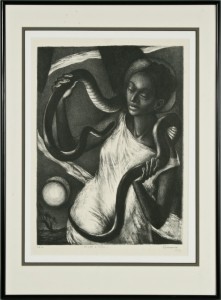
There are a lot of irrational forces here. Some get anointed as more valuable, sometimes justly, sometimes unjustly. The high-end art dealers, while equally irrational in selection of a few for stardom, at least support some of the creators of the art as well as themselves–business people who make it possible for the creators to sell. The museums also bump up value, treating their collections as something precious and eternal.
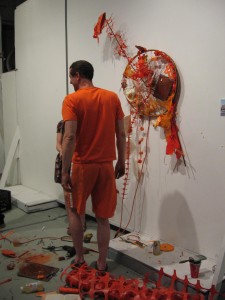
All of these art institutions affect the mindsets of collectors. Collectors learn to invest in art for profit or status, rather than buy art just for the pleasure of the art. The notion that you will make a killing in the art world is one of those stories the culture nurtures; it’s like the story of finding a Rembrandt in pile of junk in the attic. It’s hitting the lottery. You can’t organize your life around the notion that you might hit the lottery. And you can’t organize your collecting around the notion that you might strike it rich by buying work from the next Kehinde Wiley.
The following is really a mix of my ideas and Roberta’s:
Collectors need to change the way they think and support the terrific art scene that’s here and now in Philadelphia. They need to buy something just because they love it. They don’t need a guru to tell them someone is the next Picasso. And they don’t need an art aficionado to tell them what’s good. And at the prices I’m seeing in the collectives, nearly everyone can afford to buy. The proof of affordability and quality that is the people who are buying these works are other artists. So dear potential collectors, what if you see something you like and it costs $100. Why hesitate? So what if it never becomes worth $20,000 or $2 million? If you drop hitting-the-lottery from your mindset, buying art becomes easy. If you see something you like, bring it home and enjoy it for as long as it lasts. End of story.
Well, not really end of story. The truth is, if you buy something that represents an ephemeral event–the costume from a performance, say, or the DVD of a performance, or the bucket holding the detritus of the performance, then you are truly in the land of symbolic thinking. The synechdoche representing the whole performance is in your collection because you either love the artist’s work and ideas and need to have a bit of it for your own, or because you believe it will increase in cultural and/or monetary value and perhaps because you believe it will reflect on your own value. You can think of it as a lottery ticket or as something you love. It’s up to you.
At the edges of Philadelphia’s art world, there’s plenty of stuff that represents something larger–a performance, an installation. It’s all salable. So buy it, enjoy it. You just spent $25,000 on a car. You know that in a few years it will be worth only $500. Is it just the uncertainty that throws people, the not knowing for sure that it will be worth zilch eventually? We’re talking about a $100 loss, max, in so many cases. Why aren’t collectors snapping things up? Get over that fear of making a mistake. That’s what artists do. Collectors need to do that too. Besides, if they keep their eye on the pleasure principle, the “I like it” idea, they can get over the collector willies and plunk down a little dough and just have fun.


